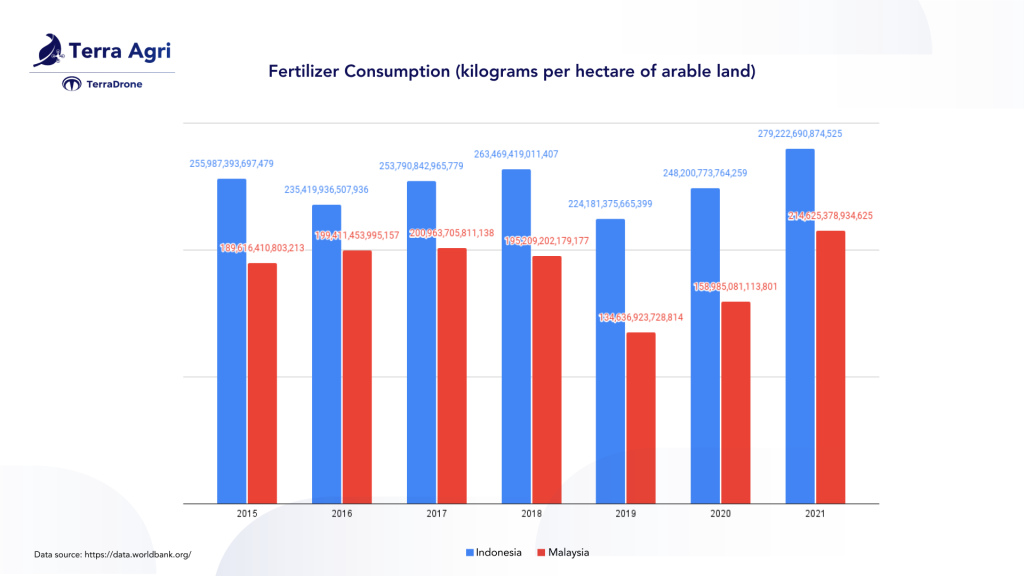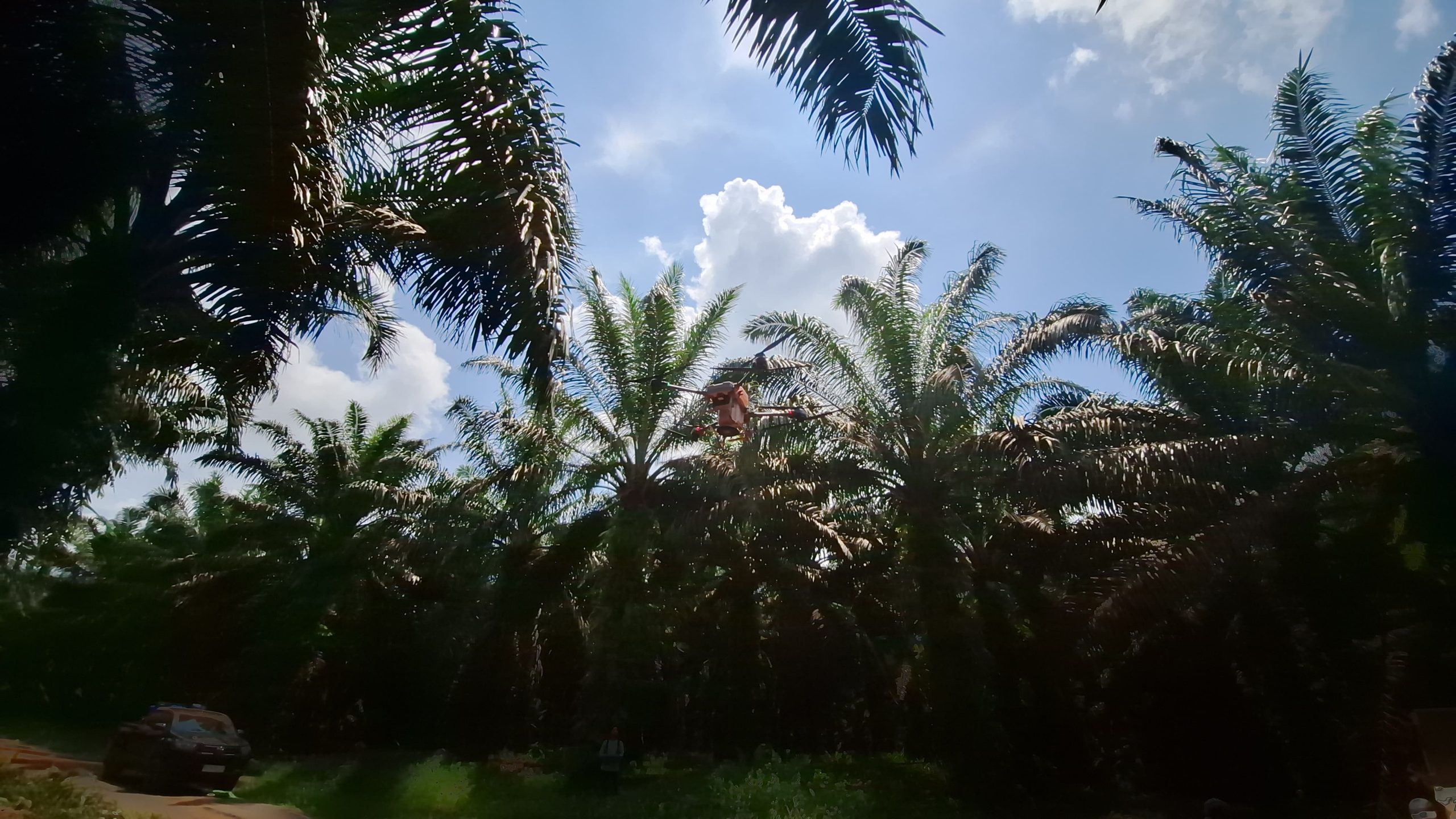Indonesia’s vast agricultural sector has seen a significant rise in fertilizer use since the 1980s, with an annual growth rate reaching 8.8% during that period. While Malaysia has also experienced growth, driven largely by crops such as rubber, oil palm, and cocoa, excessive fertilizer application has introduced new challenges. These challenges underscore the need for innovative solutions, such as agricultural drone technology, to enhance efficiency and sustainability.
The Impact of Overusing Fertilizers
Overuse of fertilizers can lead to severe soil degradation, reducing the soil’s ability to nourish plants, maintain water levels, and support biodiversity. Additionally, high nitrous oxide emissions from agriculture contribute to environmental pollution and climate change. Water pollution resulting from chemical runoff further exacerbates these issues, affecting both surface and groundwater quality.

How Agricultural Drone Technology Transforms Agribusiness
In response to these challenges, drone-based fertilizer spraying is emerging as a game-changing solution. Indonesian agribusinesses, known for their high-yielding crops, are increasingly adopting drone fertilizer application to manage fertilizer application more efficiently. These drones are equipped with advanced systems that enable precision agriculture with drones, reducing waste and enhancing crop health.
Drones for crop management can cover 50 to 100 hectares per day, offering a significant advantage over traditional methods. They also reduce fertilizer and pesticide use by up to 30%, leading to cost savings and environmental benefits. Integrating drone agriculture benefits with other services such as disease detection and soil health analysis provides a comprehensive approach to improving agribusiness productivity and sustainability. The use of automated fertilizer application techniques ensures that nutrients are delivered precisely where and when they are needed.
Assessing Your Agribusiness Needs for Drone Fertilizer Application
Before adopting a drone fertilizer sprayer, it’s essential to evaluate your agribusiness’s specific needs. This assessment ensures the effective use of drones and maximizes their benefits.
1. Evaluating Agribusiness Size and Type
The first step in optimizing drone fertilizer application is assessing the size and type of your agribusiness. Different drones offer varying capabilities. For smaller agribusinesses, a drone with lower payload capacity and shorter flight time may be adequate. These drones are generally more affordable and simpler to operate. Larger agribusinesses, however, require drones with higher payload capacities, longer flight times, and advanced navigation systems to efficiently cover extensive areas.
2. Determining Crop Types and Fertilizer Needs
Effective precision agriculture with drones depends on understanding the unique fertilizer requirements of your crops. Identify the primary nutrients needed—such as nitrogen, phosphorus, and potassium—and their specific ratios. Additionally, determine the critical growth stages for your crops when fertilizer application is most beneficial. Utilizing fertilizer delivery drones ensures that nutrients are distributed efficiently, minimizing waste.
3. Planning and Executing Your Drone Fertilizer Application
Implementing drone fertilizer application involves several key steps for a successful outcome. From detailed flight planning to monitoring operations, each step is crucial for achieving the best results.
1. Crafting a Detailed Flight Plan
A comprehensive flight plan is essential for effective drone fertilizer application. Consider the following elements:
– Select the optimal time for fertilizer application based on your crops’ growth stages and weather conditions. Ideal conditions usually involve calm winds and clear skies.
– Design precise flight routes over your fields. Use software tools to create a grid or pattern that ensures complete coverage without overlaps or missed areas.
– Calculate the correct fertilizer dosage for each field section, based on soil tests, crop requirements, and fertilizer type.
– Employing advanced drone farming techniques helps in accurately delivering the required amounts.
2. Collaborating with Drone Service Providers
Partnering with a drone service provider like Terra Agri can enhance the efficiency of your drone fertilizer application. Terra Agri’s experts determine the best timing for application based on growth stages and weather conditions. They use advanced software to create precise flight paths, ensuring thorough coverage. Terra Agri’s drones apply fertilizers accurately, providing the right dosage to each field section. This partnership simplifies planning and execution, ensuring your crops receive the nutrients they need for optimal growth.
Conclusion
As Indonesian agribusinesses face the challenges of excessive fertilizer use, drone fertilizer application offers a revolutionary solution. With the integration of automated fertilizer application and other advanced drone farming techniques, agribusinesses can enhance efficiency and sustainability. For further assistance in implementing drone fertilizer application, consider consulting with experts like Terra Agri for a tailored solution. Embracing drone agriculture benefits can lead to a more productive and sustainable future for your agribusiness.

